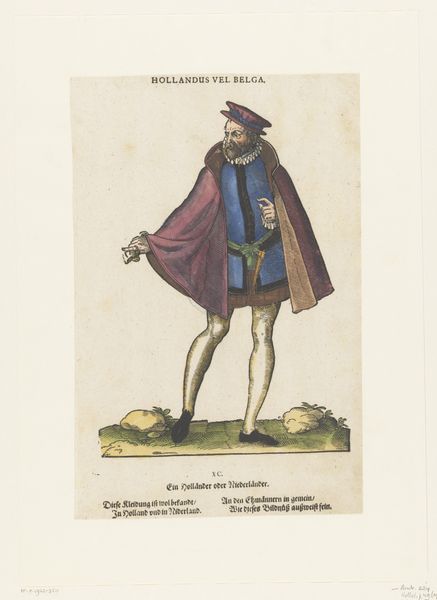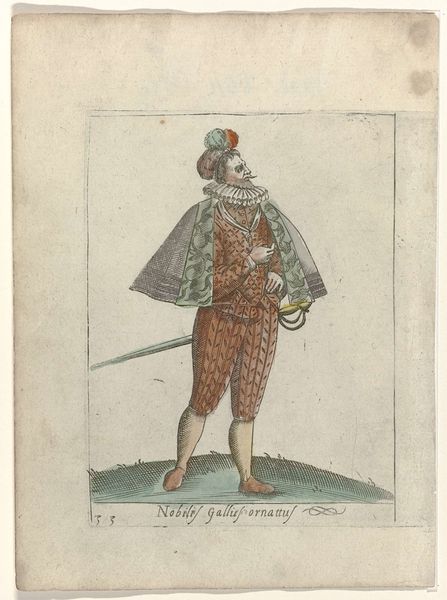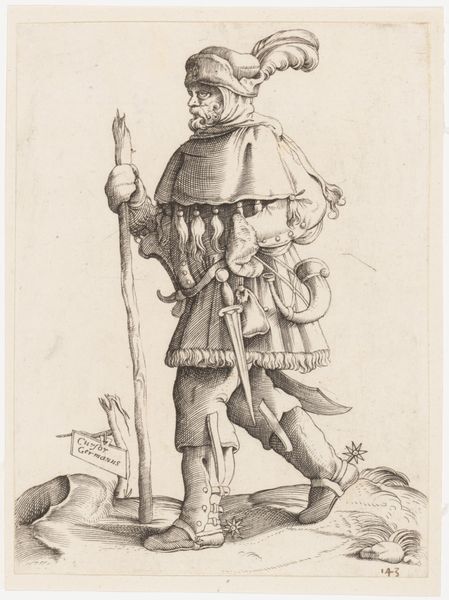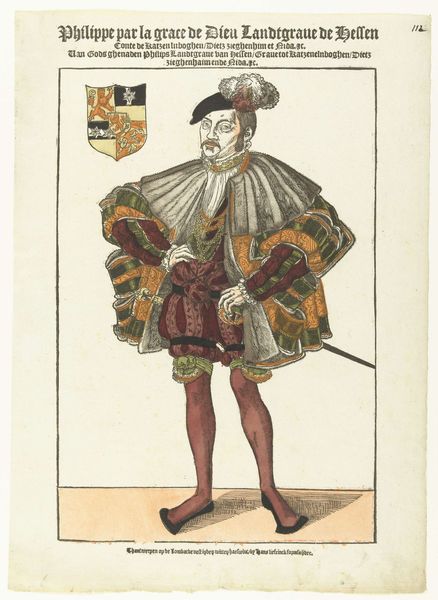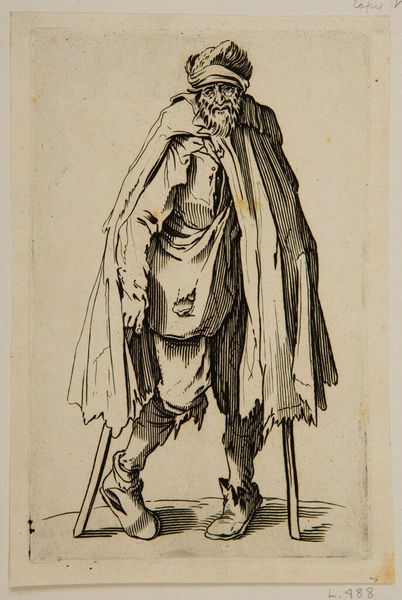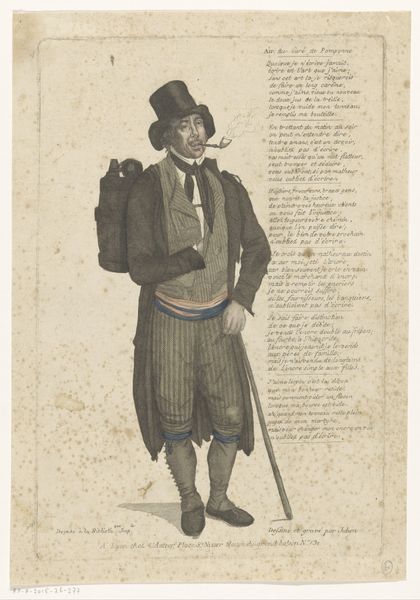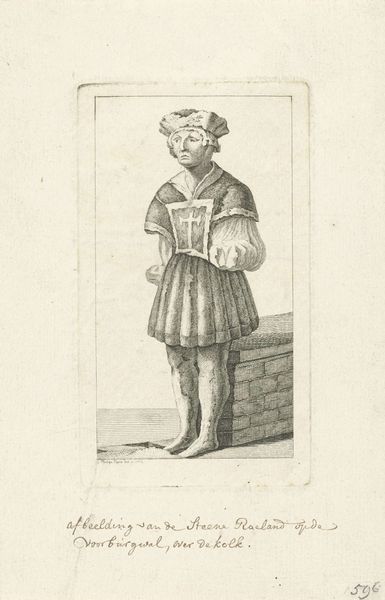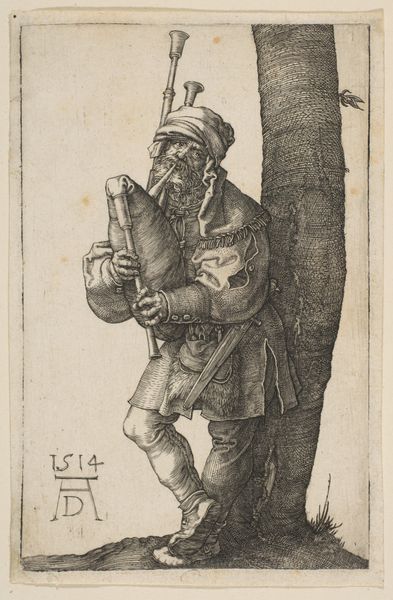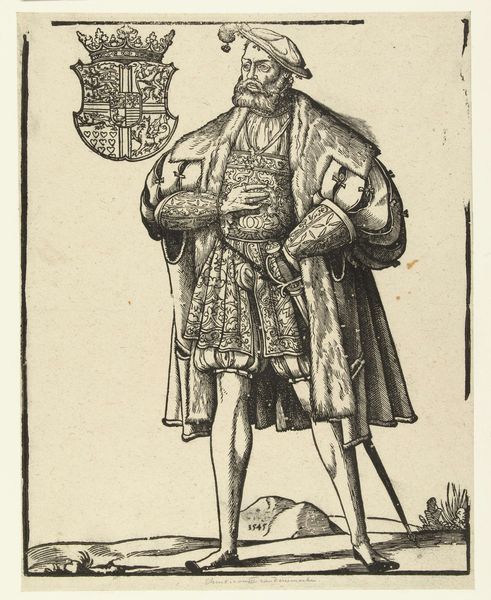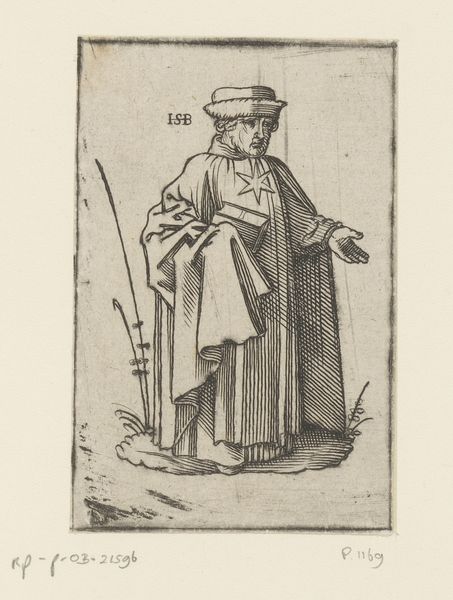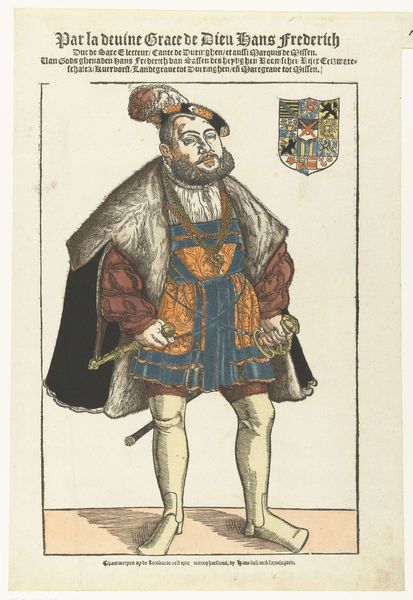
print, woodcut
#
portrait
# print
#
caricature
#
traditional media
#
caricature
#
11_renaissance
#
woodcut
Dimensions: height 405 mm, width 301 mm
Copyright: Rijks Museum: Open Domain
Editor: Here we have Cornelis Anthonisz.’s "Portret van Maarten van Rossum," made after 1542. It's a woodcut. There's something almost cartoonish about his posture, yet also imposing. What do you make of this portrait? Curator: This image, beyond a simple depiction, is steeped in the sociopolitical climate of its time. Look closely – this isn’t just a portrait; it borders on caricature. Why do you think Anthonisz. chose to represent Maarten van Rossum in this way? What power dynamics are at play? Editor: Well, his name is inscribed at the bottom. I mean... were woodcuts sometimes used to mock powerful figures? Was this meant to be subversive? Curator: Precisely. Consider van Rossum's position as a military leader. Representing him in such a way could be interpreted as undermining his authority. Further, think about the accessibility of prints – they were easily disseminated. How does this contribute to the message being sent? Editor: So, this image challenges conventional notions of power, using accessible means of distribution to democratize a critique. This artwork is advocating an alternative reading, so that its interpretation doesn't reinforce existing power structures? Curator: Exactly. It highlights the subversive potential of art and its capability to challenge authority and societal norms in Renaissance society, inviting dialogue around issues of power, representation, and resistance. Editor: That's a lot to unpack from a single woodcut! I’m rethinking how I approach art from this era. Curator: And that rethinking, that’s where the real dialogue begins. It helps us re-contextualize its place in today’s landscape, while still preserving and valuing its heritage.
Comments
No comments
Be the first to comment and join the conversation on the ultimate creative platform.
